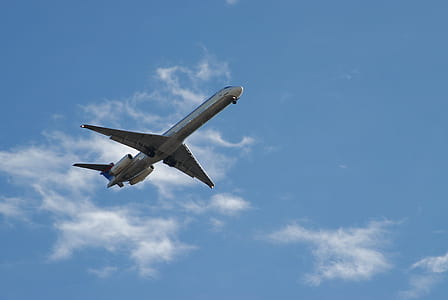
donbarkly82175
About donbarkly82175
The Evolution and Impression of Private Jets In Fashionable Aviation
The landscape of aviation has undergone significant transformations over the past century, with private jets rising as a distinguished facet of air travel. Initially reserved for the elite, private jets have developed into a logo of luxurious, convenience, and efficiency. This study report delves into the history, technological advancements, economic implications, and environmental issues of private jets, offering a complete overview of their function in trendy aviation.
Historical Background
The idea of private air travel might be traced back to the early twentieth century, with the primary private aircraft rising shortly after the appearance of business aviation. Within the post-World War II period, developments in aircraft know-how paved the way in which for the development of business jets. The introduction of the Lockheed JetStar in 1961 marked a big milestone, as it was one among the primary jets designed specifically for company use. This era also saw the emergence of notable manufacturers like Cessna and Bombardier, which contributed to the growth of the private jet market.
By the 1980s and 1990s, the private jet industry experienced exponential development, driven by globalization and the rise of the enterprise class. The convenience of private air travel allowed executives to maximise productivity by reducing travel time and avoiding the hassles of business airports. The Gulfstream II and the Learjet 35 became iconic fashions throughout this interval, symbolizing the luxurious and status related to private jet ownership.
Technological Developments
The evolution of private jets has been marked by vital technological developments. Modern jets are outfitted with slicing-edge avionics, enhanced security features, and improved gas effectivity. To read more information in regards to international private jets charter companies (privatejetcardreview.com) stop by our own web-site. The introduction of fly-by-wire technology, which replaces conventional manual flight controls with electronic interfaces, has revolutionized the way pilots operate aircraft. This innovation not solely enhances safety but also allows for extra exact control and improved performance.
Moreover, developments in supplies science have led to the development of lighter and stronger aircraft buildings. Composites and superior alloys have lowered the general weight of jets, leading to increased gas effectivity and range. The emergence of long-vary jets, such as the Bombardier Global 7500 and the Gulfstream G700, has expanded the horizons of private aviation, enabling non-cease flights between major world cities.
In-flight connectivity has also transformed the private jet expertise. High-speed web entry, satellite tv for pc communications, and leisure programs have turn out to be standard options, permitting passengers to work, talk, and relax during their flights. These technological enhancements have made private jets not solely a mode of transportation but additionally a cellular office and a luxurious retreat.
Financial Implications
The private jet business plays a significant role in the global financial system. It generates billions of dollars in revenue and supports hundreds of jobs in manufacturing, upkeep, and repair sectors. In accordance with the National Business Aviation Association (NBAA), business aviation contributes approximately $one hundred fifty billion to the U.S. economic system yearly, highlighting its significance as a driver of financial progress.
Private jets also present a novel worth proposition for businesses. The ability to journey to remote areas, attend a number of meetings in a single day, and avoid business airline delays can significantly improve productivity and efficiency. Corporations that utilize private aviation typically report increased revenue and improved worker satisfaction, as executives can maximize their time and give attention to core enterprise activities.
Moreover, the private jet market has diversified in recent years, with a rise in fractional possession and on-demand charter services. This shift has made private aviation more accessible to a broader range of individuals and companies, allowing them to profit from some great benefits of private travel with out the burden of full ownership prices.
Environmental Considerations
As the private jet industry continues to develop, so do considerations about its environmental impression. Aviation is a big contributor to greenhouse gas emissions, and private jets, which typically have a higher carbon footprint per passenger than business flights, are under scrutiny for their environmental effects. The business has responded by investing in sustainable aviation fuels (SAFs) and exploring electric and hybrid aircraft applied sciences.
Sustainable aviation fuels, derived from renewable assets, have the potential to cut back the carbon footprint of private jets considerably. Major manufacturers and operators are collaborating with gasoline producers to increase the availability and use of SAFs, aiming to attain substantial emissions reductions in the coming years. Additionally, developments in electric and hybrid aircraft technology promise to revolutionize the business, offering cleaner options for brief-haul flights.

Regulatory our bodies and industry organizations are also working to establish pointers and requirements for sustainable practices inside the private aviation sector. The Worldwide Business Aviation Council (IBAC) and the NBAA have developed initiatives to advertise environmental responsibility amongst operators, encouraging the adoption of finest practices and progressive options to mitigate the industry’s affect on climate change.
Conclusion
Private jets have come a long way since their inception, evolving into a vital part of modern aviation. Their historic significance, technological developments, economic contributions, and environmental concerns paint a complex picture of an business that is each luxurious and increasingly scrutinized. As private aviation continues to adapt to the changing landscape of travel, it faces the dual problem of meeting the demands of a growing market while addressing the pressing need for sustainability. The future of private jets will likely hinge on innovation, responsible practices, and a commitment to decreasing their environmental influence, making certain that they remain a related and revered mode of transportation within the years to come.
No listing found.

